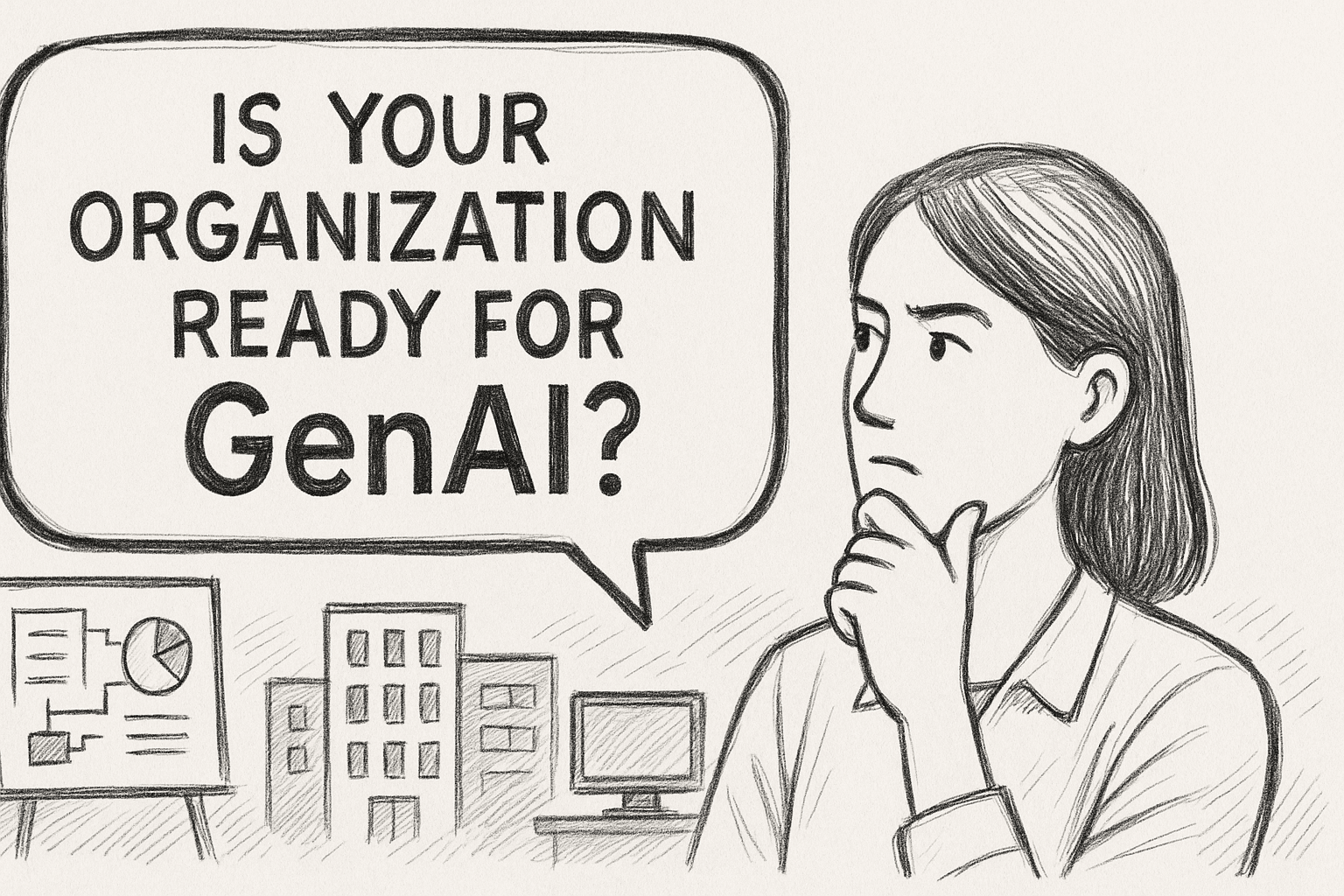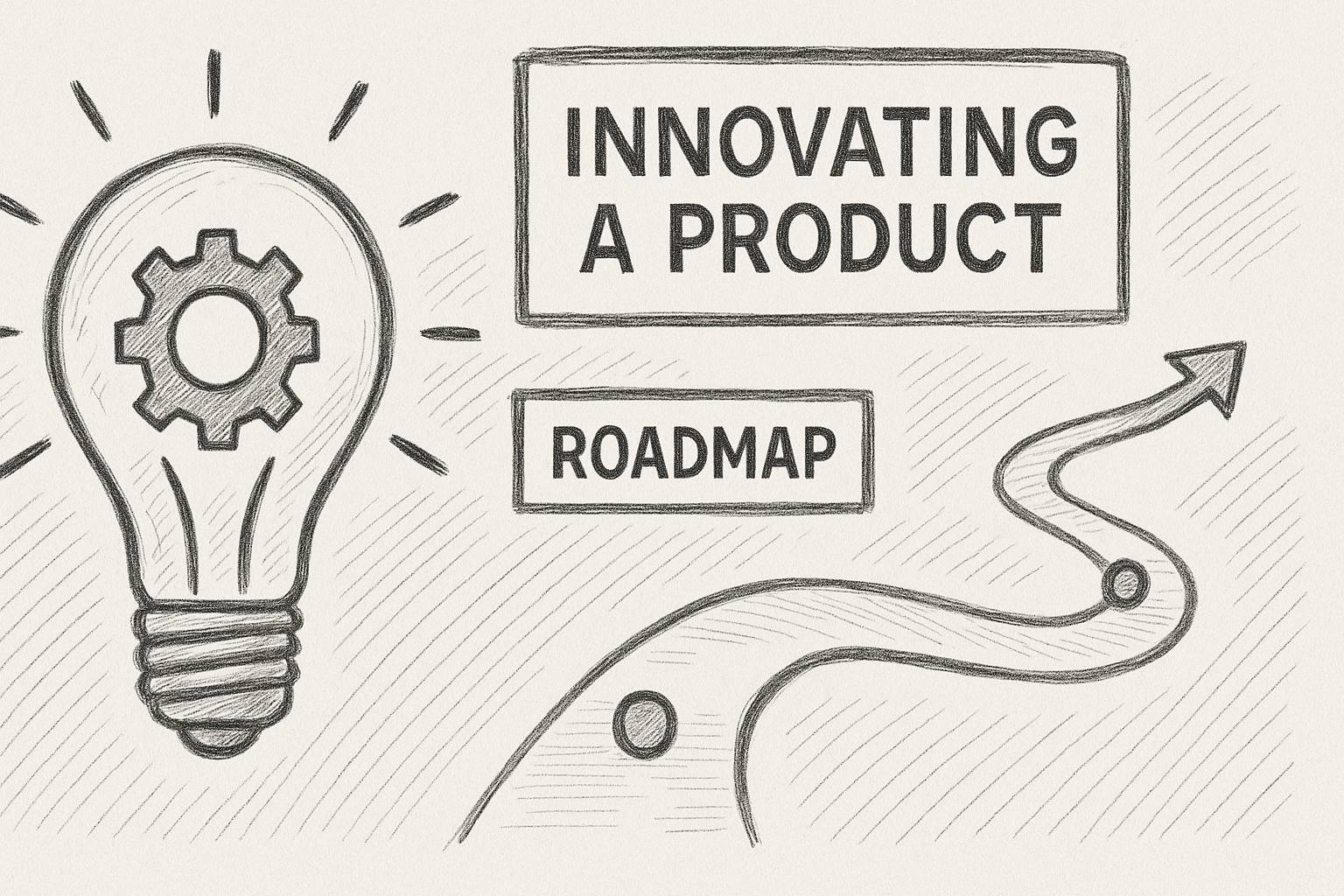AI Readiness: 10 Signs Your Organization Is Ready for GenAI
TB
AI Readiness: 10 Signs Your Organization Is Ready for GenAI
Generative AI (GenAI) is no longer just the buzzword of the moment—it’s becoming foundational to how modern organizations operate, innovate, and compete. But let’s be real: not every company is ready to take the leap.
Before diving headfirst into building GenAI pilots or shopping for the latest AI tools, it's worth taking a breath and asking one important question:
Is your organization actually ready for GenAI?
It’s easy to get caught up in the hype, but the organizations that succeed with AI don’t start with technology. They start with readiness. That means having the right people, culture, data, infrastructure, and mindset in place.
So how do you know if your organization is ready?
Here are 10 clear, no-nonsense signs that your organization is prepared to move forward with GenAI. If these sound like your current state, congratulations—you’re ready to start experimenting (responsibly).
1. You Have a Clear Problem Worth Solving
Let’s start here: GenAI should never be a solution in search of a problem.
One of the strongest signs of readiness is that you’ve already identified a business challenge, workflow inefficiency, or customer pain point that GenAI could help address. Maybe you want to automate customer support, generate content drafts faster, summarize compliance documents, or build a better onboarding experience.
The key is knowing where GenAI fits—and where it doesn’t.
If your team says, “We want to use AI to do X,” rather than “We should use AI because everyone else is,” you’re off to a solid start.
2. Your Leadership Team is Bought In (and Curious)
GenAI is a strategic shift, not just another IT project. It touches product, marketing, legal, HR—you name it. That’s why leadership support is crucial.
But it’s not just about rubber-stamping budgets. The leadership team needs to be genuinely curious about what GenAI can do and committed to managing the risks and change that come with it.
If your C-suite is asking, “How could this improve how we work?” rather than “What’s ChatGPT?”—you’re in good shape.
You don’t need an AI visionary at the top, but you do need champions who will make space for innovation and push for responsible use.

3. You Know Where Your Data Lives (and What Shape It’s In)
GenAI thrives on data. Structured, unstructured, internal, external—it doesn’t really matter. What matters is that you have some grip on:
- What data you have?
- Where it lives?
- Who owns it?
- Whether it’s clean, complete, and usable
This doesn’t mean you need a pristine data lake with perfect labeling. But if your data is siloed across random spreadsheets, buried in PDFs, or worse—unknown altogether—it’s going to be difficult to get meaningful results from GenAI, without significant data wrangling.
If your data team can confidently answer, “Can we get high-quality inputs for our GenAI model?” that’s a good sign you’re ready.
4. You Have Guardrails for Privacy, Trust, and Ethics
GenAI isn’t just powerful—it’s potentially risky. Without proper guardrails, it can hallucinate facts, leak sensitive data, and reinforce biases. That’s why readiness includes having policies in place for:
- Data privacy and ownership
- Model explainability
- Human-in-the-loop review
- Fairness and bias detection
- IP protection
Even if you’re starting small, make sure trust and safety aren’t afterthoughts.
If your security, legal, and compliance teams are already looped into your AI efforts, that’s a major readiness signal.
5. Your Team Has Technical and Non-Technical Talent in Place
GenAI is cross-functional by nature. You’ll need:
- Technical folks who understand prompt engineering, model tuning, APIs, and architecture.
- Product and design leaders who can shape user experiences.
- Domain experts who can guide the model’s purpose.
- Legal/compliance stakeholders who keep things safe and ethical
If you have all the right brains in the room and a culture of collaboration across them, you’re far more likely to build something useful—and something that actually gets adopted.
If your AI conversations include both engineers and end-users, you’re thinking holistically.
6. You’re Comfortable Experimenting (and Sometimes Failing)
GenAI success stories often start with low-stakes pilots and weird side projects. Not everything you try will work—and that’s OK.
In fact, if your organization punishes failure or expects immediate ROI from day one, GenAI might be a frustrating experience. Readiness means embracing the unknown, being open to iteration, and setting realistic expectations for what early experiments might look like.
If your culture values learning and testing over perfection, you’re ready to experiment with AI.
7. You Have Some AI Fluency Across the Org
No, not everyone needs to know how to fine-tune a transformer model. But people across your organization—especially decision-makers—should have a basic understanding of:
- What GenAI can and can’t do.
- Why it sometimes hallucinates.
- The difference between open and proprietary models.
- How to write a good prompt.
If your teams can talk about GenAI in practical terms, rather than mystified hype, that’s a green flag.
Even better? You’ve offered a few training sessions or workshops so people feel confident playing with tools like ChatGPT or Claude without needing hand-holding.

8. You’ve Chosen the Right Use Case to Start With
One of the best indicators of readiness is focus.
Trying to “AI-ify” your entire organization on day one is a recipe for burnout and confusion. Instead, you’ve picked a single, high-impact, low-risk use case to start with. Maybe it’s generating marketing copy. Maybe it’s summarizing internal documents. Maybe it’s helping your support team craft better replies.
If your first GenAI project is tightly scoped, measurable, and aligned to a real business outcome, you’re approaching this the right way.
From there, you can expand. But having a thoughtful entry point is key.
9. You Have the Right Tools and Infrastructure in Place
You don’t need a giant ML team or custom model pipeline to get started—but some basics help:
- A secure environment for AI experimentation (sandbox, dev space, etc.).
- Access to a trusted GenAI provider (e.g., OpenAI, Anthropic, Cohere)
- APIs or frameworks that integrate well with your existing tools
- A way to track model outputs, feedback, and performance
If you’re building something customer-facing, you’ll also want tools to handle rate limits, latency, logging, and fallback strategies.
If your tech team can answer, “How would we plug this into our stack?” that’s a strong signal of readiness.
10. You’re Thinking About Scaling Before You Need To
GenAI projects that succeed tend to scale fast. What starts as a pilot can quickly balloon into a widely-used workflow. So it’s smart to think ahead about scaling, even if your first use case is small.
Ask yourself:
- Who will maintain the AI tools once they’re live?
- How will we track performance over time?
- How will we keep models updated, safe, and relevant?
- What’s our feedback loop from users to model improvement?
If your team is already talking about governance, monitoring, and future phases—you’re not just ready to start, you’re ready to sustain.
So… Is Your Organization Ready?
If you’re reading this and nodding along to most (or all) of these signs, congratulations—you’re probably more ready than you think.
Even if you’ve still got a few gaps, that’s OK. Readiness isn’t about perfection. It’s about awareness, intention, and alignment.
Here’s a simple next step: Pick one GenAI use case, bring the right team together, and run a responsible, small pilot.
See what you learn. Build from there.
Because in the world of GenAI, readiness isn’t just a checkbox. It’s a mindset.
TL;DR: 10 Signs You’re Ready for GenAI
- You have a real problem to solve.
- Leadership is bought in and curious.
- You understand your data landscape.
- You have privacy, trust, and safety guardrails.
- You have cross-functional talent.
- You’re open to experimentation and failure
- Your team has basic AI fluency
- You picked a high-impact, focused use case.
- Your infrastructure can support experimentation.
- You’re thinking about scale from day one.
Final Thought: Readiness is a Moving Target
Even the most “AI-ready” companies keep evolving. New risks emerge. New models launch. New capabilities appear overnight.
That’s why the most successful organizations treat AI readiness not as a one-time status, but as an ongoing practice.
If you keep focusing on strategy, compliance, and training—and anchor everything in real-world outcomes—you’ll be in great shape.
And if you ever need a guide? Well, that’s why we’re here.
Want help figuring out where to start with GenAI?
Contact Incline Protocol to assess your readiness, align your strategy, and build GenAI pilots that make sense for your business.
